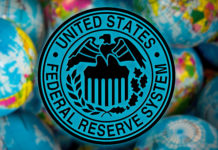Markets
The payrolls-effect on core bond yields faded ahead of the important US CPI figures scheduled for release today. US Treasuries recovered, pushing yields between 4.7 and 6.2 bps lower. German rates dropped 3.9 (2y) to 7 bps (30y) with the ECB’s Bank Lending Survey strengthening the case for a June rate cut. That said, there’s compelling evidence that the peak impact of the ECB’s hikes is well behind us, possibly aligning the credit and business (e.g. PMIs) cycle. Either way, a Bund rally into the European close tackled the euro on FX markets. EUR/USD retreated from an intraday high around 1.088 back to opening levels of 1.0857. The trade-weighted dollar found support from the 104 big figure and the Japanese yen wasn’t impressed by another series of verbal warnings nor by “people familiar with the matter” suggesting the BoJ would raise the inflation outlook in the April forecasts. USD/JPY isn’t going anywhere just south of 152, a level that’s said to trigger FX interventions if surpassed. Oil prices again eased sub $90/b (Brent) on reports of rising inventories.
All eyes turn to US March CPI today. Fed’s Bostic late yesterday reiterated he expects a slow pace of disinflation for the remainder of 2024. It’s key in his projection of only one rate cut this year. Bostic didn’t rule out the possibility of that one cut being moved out further in time, implying no rate cuts at all in 2024. Bostic is on the same page as his colleague Kashkari and we’re keen to find out who else is, perhaps in tonight’s FOMC meeting minutes. Headline CPI inflation for March is expected to reaccelerate in year-on-year terms due to low base effects from last year and solid current price increases. A “mere” 0.3% m/m rise would push up the y/y from 3.2% to 3.4%. Risks are tilted to the upside. Combined with underlying gauges stalling (core inflation 3.7%) the case for a Fed rate cut is diminishing fast. Not only in June but also in July. US yields across the spectrum after today should already find a bottom after yesterday’s minor decline. The first meaningful resistance in the 2y yield is situated at 5% with the 10y eyeing 4.54%. The US dollar is dealt the best cards against the euro considering tomorrow’s ECB meeting will probably pave the way for a June rate cut. EUR/USD 1.0793 may crack soon.
News & Views
The Reserve Bank of New Zealand kept its policy rate unchanged at 5.5%. The MPC agreed that interest rates need to remain a restrictive level for a sustained period to ensure annual price inflation returns to the 1%-3% target range (expected this calendar year). The Committee noted that most major central banks are cautious about easing monetary policy given the ongoing risk of persistent inflation. The balance of (inflation) risks was little changed. Persistent services inflation, elevated goods price inflation and anticipated increases to local government rates, insurance and utility costs pose upside risks. The ongoing restrictive monetary policy in an environment of weak global growth and structural challenges facing the Chinese economy entail downside risks. New Zealand economic growth is weak, but evolved broadly in line as expected since the February Monetary Policy Report. NZD swap rates follow yesterday’s global move this morning with yields succumbing 2.5 bps (2-yr) to 6 bps (30-yr). The kiwi dollar exploits USD weakness with NZD/USD rising to 0.6070, its highest level since the FOMC meeting.
Rating agency Fitch downgraded the outlook on China’s A+ rating from stable to negative. The revision reflects increasing risks to China’s public finance outlook as the country contends with more uncertain economic prospects amid a transition away from property-reliant growth to what the government views as a more sustainable growth model. Wide fiscal deficits and rising government debt have eroded fiscal buffers from a rating perspective with fiscal policy expected to keep playing an important role in supporting growth. Fitch forecasts the government deficit to rise to 7.1% of GDP in 2024 from 5.8% in 2023 with the debt ratio set to increase from 56.1% to 61.3% this year. GDP growth is likely to slow to 4.5% this year with deflation risks still lingering (0.7% inflation by end-2024 and 1.3% by end-2025). S&P and Moody’s hold similar Chinese credit rating with Moody’s also applying a negative outlook (since December 2023).












